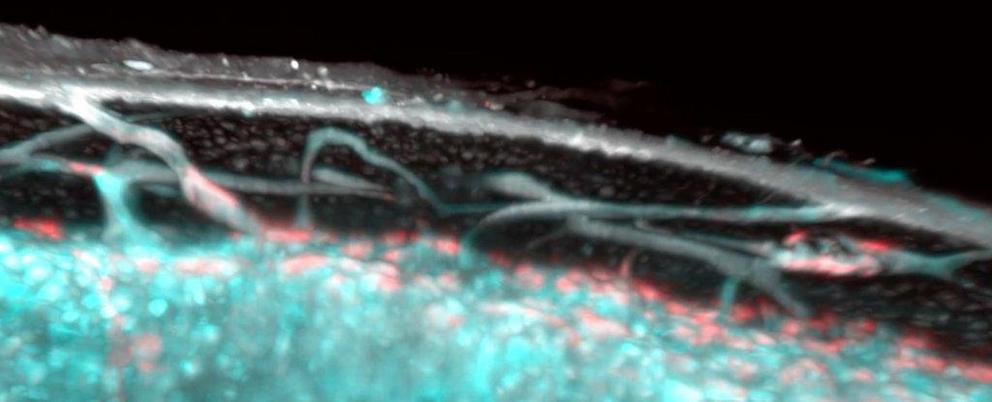A totally new type of blood vessel has been discovered hidden in human bones
We often think of bone as something that is structurally solid, especially its hard outer layer, called cortical bone.
But a new discovery of never-before-seen hidden passages traversing these rigid organs in both animals and humans could lead to a rethink of the structure and function of basic skeletal anatomy.
In a new study, researchers in Germany report finding a previously undetected network of fine blood vessels that act like a secret tunnelling system inside bone, helping blood and immune cells spread efficiently and rapidly throughout the body.
Elon Musk would probably approve.
"It is really unexpected being able to find a new and central anatomical structure that has not been described in any textbook in the 21st century," explains molecular immunologist Matthias Gunzer from the University of Duisburg-Essen.
These tiny canals, called 'trans-cortical vessels' (TCVs), may be new to science, but they help explain how emergency drug infusions first pioneered on the battlefield were able to rapidly revive injured soldiers.
In such emergencies, medics don't always have the time or ability to find or access veins, resorting to injecting drugs directly into bone marrow.
"Despite accumulating evidence for the presence of a complex blood supply in bone, the molecular mechanisms and anatomy underlying these rapid shifts of cells and fluid from bone marrow to the circulation have remained elusive," a commentary on the new research explains.
Now, the basis of that mechanism is laid bare, having first been spotted by accident several years ago. Gunzer was studying fluorescent-dyed blood cells in mice, and observed them under the microscope appearing to pass through what should have been solid bone.
Unable to discover anything in medical literature that could explain the phenomenon, he devised a new research project to explore what was going on.
In the new study, Gunzer's team used a chemical called ethyl cinnamate on mice tibiae (leg bones) to 'clear' the bones, making them transparent.
Then, using a combination of light-sheet fluorescence microscopy (LSFM) and X-ray microscopy, they were able to detect for the first time several hundreds of these tiny TCVs passing through the cortical layer of the leg bones.
According to the researchers, a mouse tibia can contain more than 1,000 of these small capillaries, and amazingly enough, the team says over 80 percent of arterial and 59 percent of venous blood passes through the channels.
That's a lot of blood flow for something scientists didn't even know about.
"I have never seen such vessels," biomechanics researcher Ralph Müller from the Swiss Federal Institute of Technology, who wasn't involved with the study, told STAT.
"But we have never really looked either. So this is a surprise for me … that certainly will need some replication in other labs."
When the team examined human anatomy by imaging the leg bone of a human volunteer (Gunzer himself), they found evidence of the same kind of TCV structures, although they were thicker, and the researchers acknowledge more work is needed to confirm their exact function.
As for how these hidden passages escaped our notice up until now, the team says the breakthrough is down to technological advances in imaging, but they admit even they are surprised by the unexpected result.
"It's totally crazy there are still things to find out about human anatomy," Gunzer told New Scientist.
"We have discovered blood vessels in a new place that we didn't know about before."
The discovery – reminiscent of another secret tunnelling system in the skull uncovered by a Harvard-led study last year – could bring about all sorts of new medical leads for research into inflammatory diseases, tissue injuries, cell migration, or just understanding how blood flows.
"Since key bone pathologies are associated with alterations in the TCV system," the authors write in their paper, "entirely new research possibilities that further characterise the role of TCVs in skeletal biology and disease can be envisioned."
The findings are reported in Nature Metabolism.
Video can be accessed at source link below.

